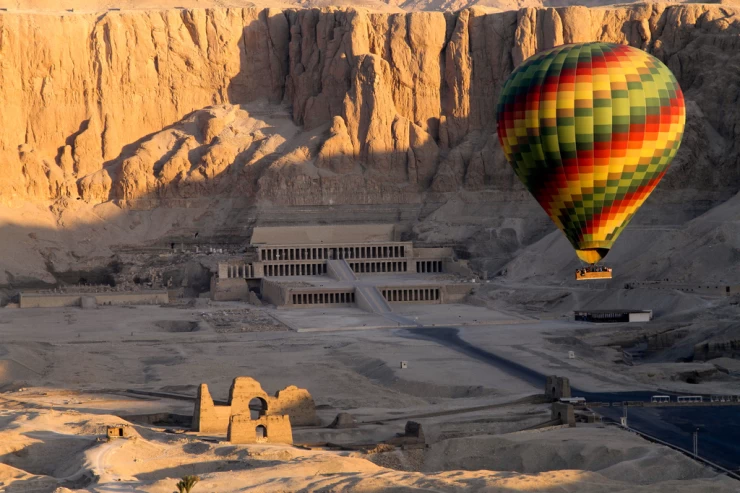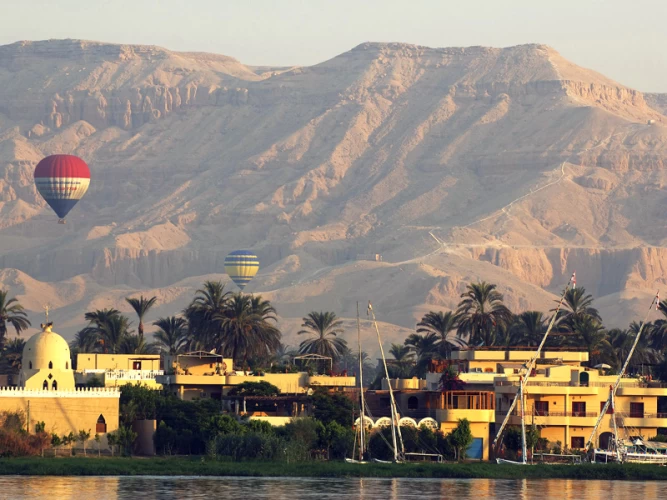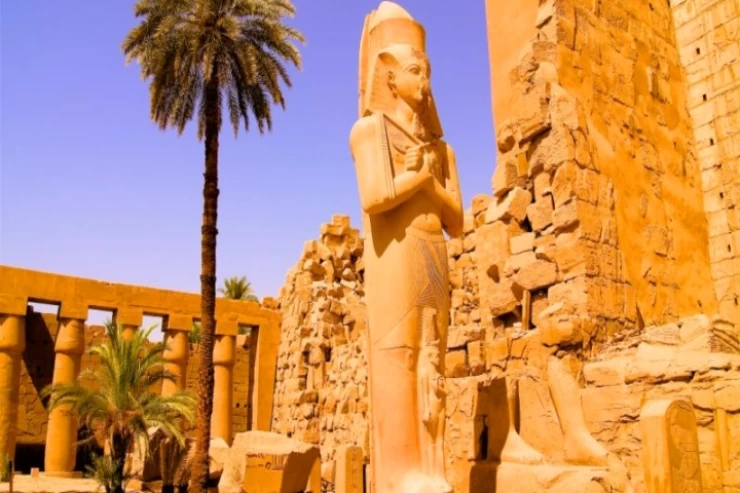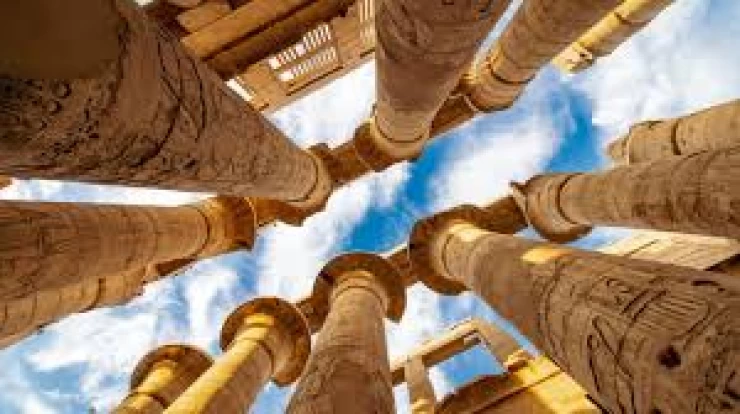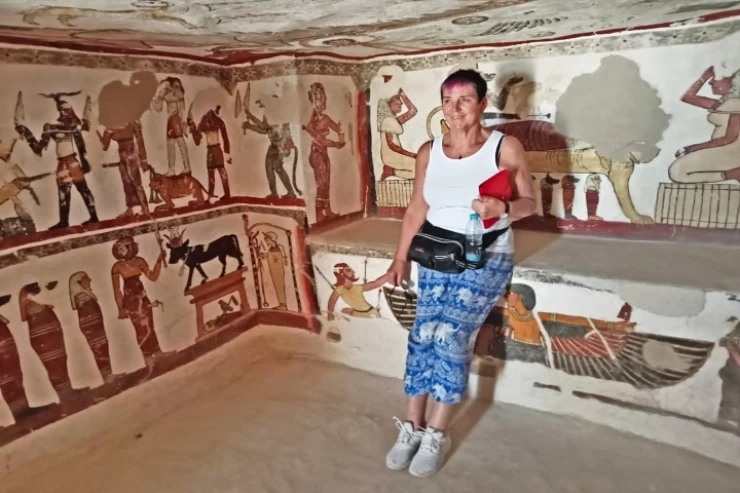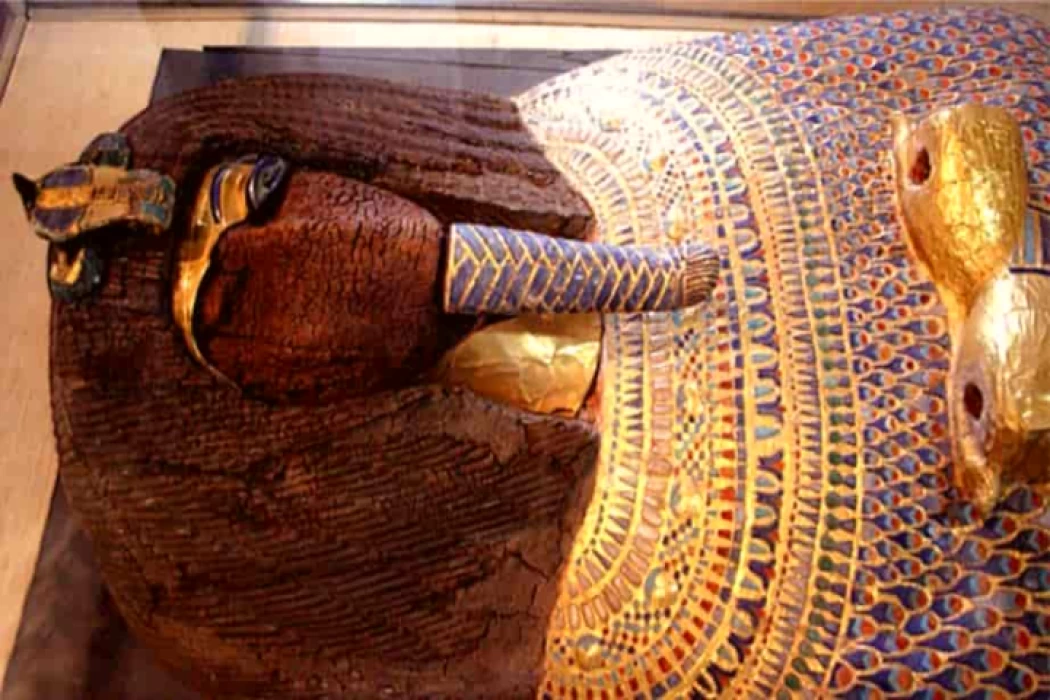
The Tomb of Amenhotep II in The Valley of The Kings
its ceiling was decorated with blue and shining stars in it, and the walls were decorated with colorful carvings on a yellow ground. The walls also bear a complete copy of a funeral book (Amdwat) or what is found in the afterlife, and this tomb was discovered by Victor Loret, Director General of Antiquities in 1898.
In one of the side chambers of the tomb, an archaeological cache was found containing 9 mummies of other kings who were transferred to his tomb, includin
The Tomb of Amenhotep II in The Valley of The Kings
King Amenhotep II has much archaeological evidence in Luxor that confirms the power of this king, including a block of pink granite found in the Luxor Museum in the form of Amenhotep II on a chariot, and striking with his arrows that pierce copper. And also two statues in the form of a ram in front of the edifice of Queen Hatshepsut in the Temple of Karnak are attributed to him. He also established a botanical garden in the Temple of Karnak, as did his father, and he also has a funerary temple near the Temple of the Ramesseum on the western mainland, in which an Italian mission is currently working, in addition to his tomb, which is one of the greatest tombs archaeological.
The inscriptions found of King Amenhotep II confirm that he was a gifted and great athlete, with a strong forearm and muscular, and he was adept at rowing, archery, and horse riding. Amenhotep II ruled for 25 years, and he followed in the footsteps of his father, the great King Thutmose III. To him, princes and kings of all Asian countries sent him gifts and gifts and declared their loyalty to him.
The tomb of Amenhotep II in the Valley of the Kings is one of the most beautiful and grandest tombs found in Luxor. It was carved into the rock and
g Thutmose IV, his son and grandfather Amenhotep III, Siptah, Merneptah, Rameses IV, V, VI, Seti II, and Six Nakht, in addition to the mummy of Amenhotep II, who was found inside his coffin and around his neck a wreath.
Latest Articles
Admin
Seabourn Sojourn Cruise Stops in Safaga Port
The Seabourn Sojourn, the flagship vessel of Seabourn Cruise Line's ultra-luxury fleet, was built in 2008 at the T. Mariotti shipyard in Genoa, Italy. Measuring 198 metres, it can accommodate up to 450 guests in its 225 spacious all-suite staterooms.
Admin
Norwegian Sky Cruise Stops in Safaga Port
Norwegian Cruise Line operates a cruise ship called the Norwegian Sky. It was constructed in 1999 and can accommodate 2,004 passengers in addition to 878 crew members. The ship has several dining establishments, lounges and bars, a spa and fitness center, swimming pools, and a number of entertainment areas.
Admin
Explora II Cruise Stops in Safaga Port
Explora II, the second vessel in the Explora Journeys fleet, sets sail in 2024 to redefine luxury cruising. With 461 ocean-front suites, 9 culinary experiences, and 4 pools, this haven of sophistication and sustainability promises an unforgettable "Ocean State of Mind" journey to inspiring destinations.
Admin
Mein Schiff 6 Cruise Stops in Safaga Port
The Mein Schiff 6 is the latest cruise ship in the renowned TUI Cruises fleet, offering passengers a luxurious and sophisticated cruise experience. At 315 metres long, this floating resort features a range of dining options, entertainment, and recreational facilities, including a spa, fitness centre, and sports amenities.
Admin
Mein Schiff 4 Cruise Stops in Safaga Port
When the Mein Schiff 4 cruise ship docks in Safaga, Egypt, passengers are granted access to a realm of ancient wonders. Aboard this state-of-the-art vessel, guests can embark on meticulously curated shore excursions that showcase the region's most iconic landmarks, including the Giza Pyramids, the enigmatic Sphinx, and the remarkable tombs and temples of the Valley of the Kings in Luxor.
Admin
MS Europa Cruise Stops in Safaga Port
The Silver Moon, Silversea's latest flagship, is a luxury cruise ship that offers an exceptional travel experience for Venezuelans exploring Egypt. With a capacity of 596 guests and an impressive 40,700 gross tonnes, the Silver Moon maintains the small-ship intimacy and spacious all-suite accommodations that are the hallmarks of the Silversea brand.






